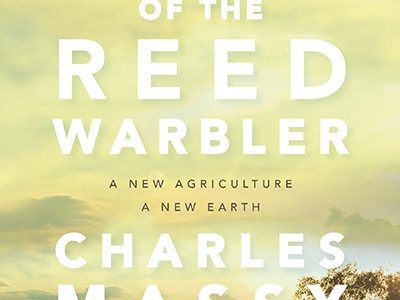Managing water quality through regenerative agriculture

Understanding and managing what flows out of coastal catchments into estuaries and ICOLLs is vital to improving the health of our waterways. It was a point made very clear to me at a recent meeting of the new NSW Coastal Council by the waterways science team from OEH and by representatives from those involved with the Marine Estate Management Authority (MEMA). There are new ways of identifying pollution risks within catchments and it is a challenge to state agencies, local councils, landowners and communities on how best to address such risks. Recent discussion of federal funding to an organisation interested in improving Great Barrier Reef condition has also raised the bar on just what processes and actions must be taken in this connection.
I have just finished reading a book by Charles Massy entitled “Call of the Reed Warbler. A New Agriculture, A New Earth” (UQP, 2017). You might ask what has this to do with the coast. Well a lot.
Massy is a fifth generation sheep grazier from the Monaro region in southern NSW who has a PhD in ecology from ANU. He has crafted an amazing book looking at the degradation of Australian landscape conditions building on the land ethic philosophy of Aldo Leopold, Ian McHarg and others. As various reviewers have stated, it is a brutally honest book which is “exhaustive, scholarly, eminently readable and deeply personal”. Massy spells out innovative ways of thinking through case studies of a number of graziers and farmers in different parts of Australia. He challenges established mechanistic practices and provides examples of what he terms regenerative farming. He places much of the blame on the current state of landscapes to an entrenched mindset that prioritises technology over natural systems.
In her Foreword to the book, Valerie Brown states that Massy is seeking the emergence of a regenerative era in which humans match their interventions to the inherent ways of the land, otherwise termed “listening to the land”. We have learnt so much about Australian landscapes (and coasts and seas) since European occupation, and what Massy is trying to do is apply a way of thinking that encompasses nature’s way of self-regulation. This will sustain agriculture not just through periods of drought but into potentially through much tougher conditions as climate change bites in the advancing years of the Anthropocene.
He divides the book into sections which later become quite neatly integrated: regenerating the solar-energy function; regenerating the water cycle; regenerating the soil-mineral cycle; regenerating dynamic ecosystems; and finally landscape regeneration, the role of human-social. I was particularly impressed with his discussion and examples of improving soil health. But his philosophy all becomes clearer in Part III of the book on transforming ourselves and the Earth. Here is where I see a link to our catchments and the health of coastal waters.
He examines the impact of the rise and continued application of what is termed “industrial agriculture”. This refers to the power of organisations who products and promotions have had long-term adverse effects on soils, especially “by the application of synthetic fertilisers, herbicides and pesticides, which kill off the soil biology and other biotic diversity” (p.461). He relates this to human health issues as well as to landscape condition. The point here is that these toxins enter the food chain and the water system.
So the case is made in this book for Australians to look beyond the conventional mechanistic approach to farming which permits nasty things to happen to our landscapes, our waterways and human health. The case studies illustrate what can be done involving dedication, persistence, patience, testing and continuous learning about our “country”. The link back to Indigenous use of land over 65000 years is evident, but it is the challenge of the Anthropocene that is powerfully demonstrated in improving the way we manage our lands, including our catchments in future. Here we see how integrated is catchment health and agricultural practices to estuary and ICOLL health. This is a book worth digging into.
Bruce Thom
Words by Prof Bruce Thom. Please respect the author’s thoughts and reference appropriately: (c) ACS, 2018, posted 18 August 2018, for correspondence about this blog post please email austcoastsoc@gmail.com
#117


